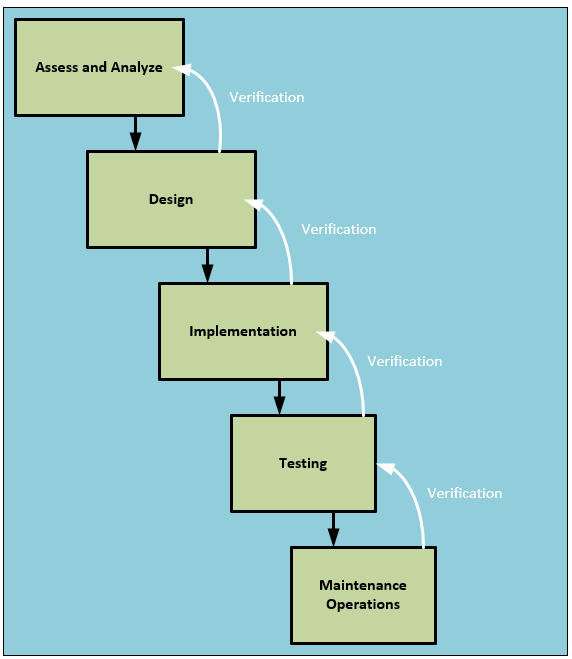Has your organization made long-term plans for working and learning from home?
Why Should You Align Digital Transformation with DevOps?
Organizations are defined by their IT and investments in modern tech.
Information Technology (IT) is about managing a portfolio of investments that include time, money, people, data, and assets. Digital Transformation is ultimately an investment strategy. You take data from your existing investments (for example: investments A, B, And C) and use that to guide your next investments (investments D, E, F) with the intent to increase the value and speed it took to make that investment.
While digital transformation is necessary to remain competitive in today's business market, it will require more than just adopting the newest technology. To become digital-first enterprises, modern organizations must embrace a cultural shift—a DevOps transformation.
DevOps transformation covers all the tools, resources, and practices that integrate your organization’s development and operation teams. It paves the way for collaboration, allowing your organization to achieve digital transformation quickly while providing the highest value for all stakeholders.
The DevOps journey can be challenging and may require you to create a DevOps transformation roadmap tailored to your organization.
Let's review why this is necessary, what it entails, and how you might proceed.
What Is Sunk Cost Fallacy?
Data either grows in value or provides the value quicker. And more valuable data leads to better decisions. One of the key tenants of Digital Transformation is that investments in modern IT solutions pay off faster with a higher return than any time or money spent on extending legacy investments. But how do you know when it’s time to develop the retirement plan for any existing IT investments? Simply use the Greenfield test (also known as the Sunk Cost Fallacy test).
Ask yourself, "if I was to start over, what would I keep in my existing portfolio?" That list of "keep" investments is clearly providing value to you. Everything else needs a transition plan!
-1.png?width=1200&name=LinkedIn%20Blog%20Image%20(21)-1.png)
What About Technical Debt?
IT investments have hidden soft costs that often arise out of expediency or ease. Choosing what may appear as an easier solution over a more strategic investment that costs more often yields to Technical Debt.
Technical Debt refers to the additional costs to rework solutions as a result of a short-term investment. Technical debt can lead to problematic and surprising results, as it is often untracked. Just like financial debt, it gets worse the longer it remains unpaid.
Here are some examples of Technical Debt:
-
Student Labs for 3D Modeling/Graphic Design/CAD:
We work with several large education institutions that invested heavily into student labs for advanced design or media arts applications. These solutions often have higher hardware requirements than traditional laptops, desktops, or mobile devices. Labs tether all development to a geography. When the pandemic required all learning to be remote, administrators were scrambling to rework all student labs in order to support remote learning.
-
Low-Cost Storage Solutions
The IT industry is awash in what may at first appear to be low-cost/no-cost (at first) simple storage solutions. While these easily accessible storage solutions can provide immediate (short-term) relief to capacity issues, these solutions are usually not integrated into any planned security, operations, or other strategic directions of the organization.
The result is an untamed compounding management nightmare that threatens growth. The longer institutional data resides in such solutions, the more expensive the transition plan will be to resolve it in the future.
How Can You Avoid Technical Debt?
Good investments lead to better future investments. The lifecycle of each asset must be planned from design and development to on-going operations and security of the solution.
Assets need more than just care and feeding. As a result, all of our partners have solutions aligned with the cultural shift away from “Waterfall” type deployment to DevOps/DevSecOps approaches.
Let’s look at the most traditional methodology: the Waterfall.
What Is the “Waterfall” Methodology?
The “Waterfall” methodology is a traditional/linear approach to solving problems:
- Step 1: Analysis/Assessment—The problem is defined, requirements are gathered, and success criteria are documented.
- Step 2: Design—The solution is mapped out and aligned with the problems you are trying to solve. In our experience, the best designs start with an overview of the existing environment and a highlight of the major proposed changes. The design team then verifies that the solution meets the requirements gathered from the assessment stage.
- Step 3: Implementation—Once the design is approved by the stakeholders, it’s time to deploy and integrate the new solution. The deployment team verifies that the implementation matches the design.
- Step 4: Test/Validation—After implementation, it’s important to validate, verify, and test the implementation to ensure the implementation meets the success criteria of the design.
- Step 5: Maintenance—The deployment, implementation, and testing teams hand over the project to the maintenance/on-going operations team, along with all documentation and any knowledge transfer. The project is marked as complete.
 Figure 1-Waterfall Methodology
Figure 1-Waterfall Methodology
The challenge with the Waterfall Methodology is that change can be slow and difficult to enact. Digital Transformation (by definition) is about responding quickly to an accelerating rate of change.
Why DevOps Transformation?
Unlike the Waterfall Method, DevOps embraces a looping approach that is never complete. DevOps (Or DevSecOps) is the idea that Business Projects, IT Operations, Change Controls, and even Unplanned IT Work are all interrelated and integrated.
Your data is both input and output to a massive flow throughout the organization. DevOps transformation entails a cultural shift toward improving the workflow of decision-making data (Input) into analysis tools to more quickly deliver valuable analysis (Output) for the next decisions (Investments). All stages of this process are built with the incorporation of security and governance of all data access.
DevOps transformation is NOT a technology or a technique. It is a cultural shift built out of the Agile software development methodologies. Unlike more traditional deployment methods, DevOps culture is based on the fundamental principle that no solution is ever finished, and no solution delivery is ever complete. Instead, these methods aim to deliver solutions that continually improve an organization and adapt to its changing needs. As a result, the organization is better equipped to adapt, improve its products and services, and meet the demands of its stakeholders.
5 DevOps Transformation Steps to Help You Get Started
DevOps encourages continual improvement and collaboration to meet organizational goals, which can help transform your organization.
Here's how to get started.
1. Identify Business Goals & Create a Change Plan
Assess the current state of your development processes and identify room for improvement. Processes to review include:
- Quality assurance testing,
- Application deployment
- Monitoringa
- Communication
In the evaluation stage of the process, you might discover areas where the company needs additional IT support. After completing the assessment, create a comprehensive plan that outlines strategies to rectify challenges and improve efficiencies.
2. Prepare for the Cultural Shift
DevOps transformation will integrate people, processes, and technologies into one. Expedite the adoption process by identifying and mobilizing team leaders to help facilitate the transition of each team. The management should inform everyone of the plan, its value, and what changes will occur in the company as a result.
3. Leverage Technology & Automation
Automation enables organizations to ensure their processes' consistency, accuracy, and reliability. Businesses should use tools and technologies to automate as many processes as possible to achieve DevOps transformation. Modern organizations can leverage consulting and managed IT services to ensure that their IT infrastructure matches the needs of their business.
4. Implement and Monitor CI/CD Pipelines
Continuous Integration (CI) is the practice of merging code changes into a shared mainline. Continuous Delivery (CD) is the practice of automatically implementing these code changes for application release and deployment.
Implementing automated CI/CD pipelines enables fast application production, testing, and distribution. Likewise, effective CI/CD monitoring can help DevOps teams assess application performance and identify failures early.
5. Measure DevOps Performance Regularly
The goal of DevOps transformation is to streamline business processes and improve efficiency. Measuring Key Performance Indicators such as Deployment Frequency (DF), Lead Time for changes (LT), Mean Time to Repair (MTTR), and other metrics can help organizations evaluate the success of their efforts and pinpoint the areas that need improvement.
The DevOps transformation roadmap will look different for every organization, but these basic steps can help you get started. While embracing this culture shift can be challenging in today's complex IT environment, you don’t have to embark on this journey alone.
At Data Networks, we offer computing solutions to help your business simplify deployment and IT management.
Reach out today to learn more!


.png?height=200&name=LinkedIn%20Blog%20Image%20(1).png)
.png?height=200&name=LinkedIn%20Blog%20Image%20(11).png)
